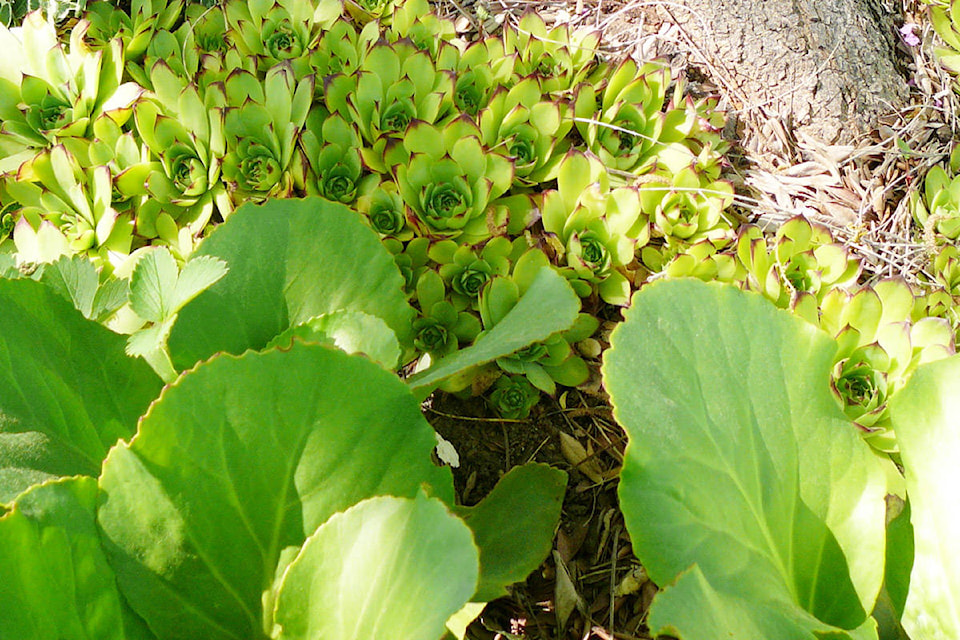With the sudden hot weather, a shady garden becomes appealing both to garden in and for sitting.
Growing plants under a big shade tree can be a challenge so this week I’m going to tell you what has been successful under the large honey locust tree that dominates my front yard.
I have found it easiest to plant lots of small plants amongst the roots, amending the planting holes with organic matter. Small plants adapt better than large specimens.
Plants need to be drought tolerant as they will always be competing with the tree for water. Also the tree canopy shelters the ground below from rainfall. My sandy soil makes it even more challenging. In autumn I leave the small tree leaves as natural mulch. In spring I sometimes top this with mulch such as Glenmore Grow to add extra nitrogen as well as for more water retention.
Weeding is eliminated as the plants have become a continuous, varied ground cover.
In early spring, before the tree leafs out, the garden is alight with spring bulbs: Winter aconite, snowdrops, narcissus, tulips and grape hyacinth. All their dying foliage is hidden by the later-emerging ground cover perennials.
Ground covering plants that have been successful are:
Bigroot geranium (Geranium macrorrhizum), Cambridge cranesbill (Geranium ‘Cambridge’) and bloody cranesbill (Geranium sanguineum) all have pink blooms in late spring and attractive foliage. The first two have fragrant leaves.
Sedum spurium ‘Dragon’s Blood’ and Russian stonecrop (Sedum kamstchaticum)
Stachys byzantina, the common flowering variety of lambs ears is good for bees. Stachys ‘Helen von Stein’ has few flowers but huge, fuzzy, silver leaves.
Barrenwort (Epimedium) has interesting leaves that look good even in winter but must be cut back very early in spring to enjoy the dainty flowers.
Evergreen, Euonymous fortuneii ‘Emerald Gaiety’ covers the ground and is rambling attractively up the tree trunk.
Bergenia has big, round, leathery leaves that last through winter, dying back when new leaves and early pink flowers emerge.
Lady’s mantle (Alchemilla mollis) has yellow flowers now and interesting foliage. Although not a root spreader (like the above plants), it spreads readily by seeds.
Taller plants that add texture and colour are:
Ostrich fern, the toughest of ferns, will gradually form a tall colony.
Tall, fall-blooming Sedum Autumn Joy and Sedum ‘Matrona’ look like small, rounded shrubs.
Heuchera ‘Palace Purple’ is a tough coral bell with burgundy foliage.
Artemesia ‘Valerie Finnis’ has tall stems of silver leaves.
For more water-wise shade and part shade plants, check the plant database at www.okanaganxeriscape.org
Eva Antonijevic will present OXA’s ‘Introduction to Xeriscape’ workshop at the Summerland Ornamental Gardens, Saturday, June 10 from 10 a.m. to 3 p.m.
This will be extra informative as Eva will take the participants on a guided tour of the xeriscape gardens at the end of the workshop.
For information and to register, go to the classes page at www.okanaganxeriscape.org
